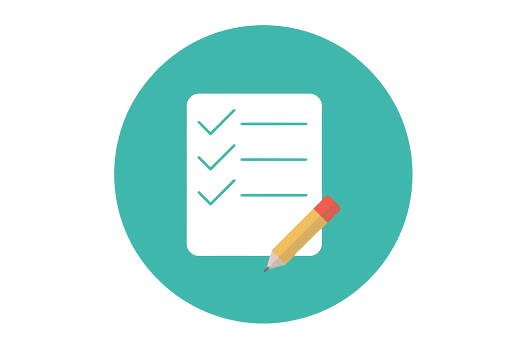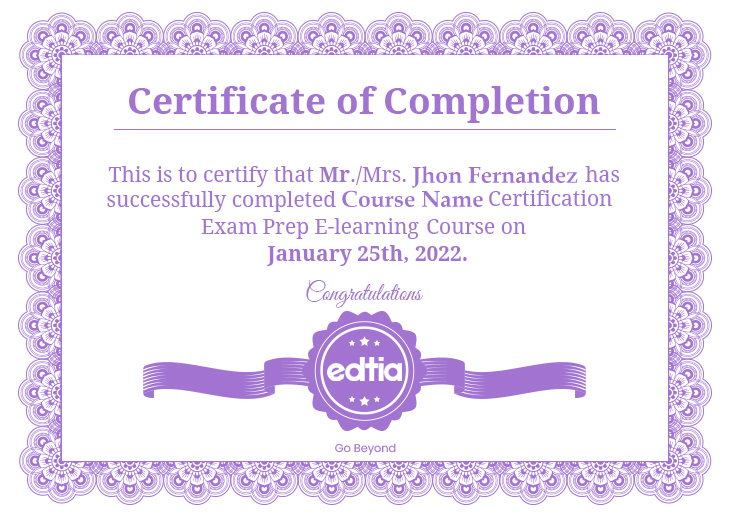Your Shopping Cart

Enroll now to become a PH & amp MySQL with MVC Frameworks expert with EDTIA PH & amp MySQL with MVC Frameworks Certification Training, upgrade your skills, and lead your professional life.
PH & amp MySQL with MVC Frameworks Certification Training is a course designed to make you an expert in using PHP & MySQL and learn all that is required to develop real-world web applications with PHP & MySQL.
What is the PHP MVC framework? PHP MVC is an application design pattern that divides the application data and business logic (model) from the presentation (view). MVC stands for Model, View & Controller. The Controller mediates between the models and theories.
MVC stands for "Model view And Controller." The main aim of MVC Architecture is to divide the Business logic & Application data from the USER interface. Different types of architectures are available.
PHP MVC is an application design pattern that splits the application data and business logic (model) from the presentation (view). MVC stands for Model, View & Controller, and the Controller mediates between the models and theories.
PHP (Hypertext Preprocessor) is a general-purpose scripting language that can be utilized to create dynamic and interactive websites. It was among the first server-side languages that could be embedded into HTML, making it easier to add functionality to web pages without calling external files for data.
MVC is essential because it is the basic structure on which most web applications are built, and the same is also true for mobile apps and desktop programs. There are many interpretations of the primary idea of MVC. The initial concept was built around 1978 at Xerox PARC by Trygve Reenskaug.
Development of the application becomes fast. Easy for numerous developers to cooperate and work together. Easier to Update the application. Easier to Debug as we have various levels written correctly in the application.
Open Source, Easy and fast maintenance. Superior performance, greater scalability, reliability. Compatible with an operating system like IIS, Apache, etc. Platforms are independent and run on Linux, Windows, or Unix.
In this module, we will understand what PHP &MySQL is and why it is so popular. You will learn PHP basics, installation setup, data types, arrays and decision making statements.
In this module, we will learn about the functions. Next, we will learn about how to send mails using PHP. In addition, we will learn regular expressions, predefined functions and its uses. We will also understand how to manipulate with system files, error handling and debugging.
In this module, we will learn how to define classes, how to create object for the class and how to invoke methods and functions. Next, we will learn the object oriented functionalities like inheritance, method overriding, interfaces, constants, Access Specifiers and abstract classes.
In this Module, We will discuss what is database and database terminology. Then we will see how to install MySQL in our system. We will see how to connect with MySQL. Then we will discuss about syntax, database creation and create tables inside database and database manipulations like add, edit, and delete.
In this module, we will learn advanced queries and SQL injection concepts. We will discuss about Like clause, how to sort values, how to fetch using joins, how to handle NULL values, Regular expressions, Transactions and alter command. We will also discuss Indexes of the table, temporary tables and clone tables. Then we will see duplicate tables and SQL Injection. We will learn how to retrieve and manipulate data using PHP.
In this module we will learn the MVC terminology, advantages of MVC. We will learn how to install and configure CakePHP on top of existing PHP apache web server we will also see CakePHP folder structure and important configuration.
In this module we will learn how to create controllers and views. We will learn how URLs are mapped to the controllers and views. We will learn how the controller and view interacts and exchanges data between them.
In this module we will learn models in detail. How to define models, use it for database access and manipulation. How to use basic SQL queries in models.
In this module, we will learn about how to generate forms using CakePHP html helper, validate forms using model definitions, difference between get and post methods, cookies , uses of cookies, how to set and retrieve cookies, what is sessions, how to start and destroy sessions, automatically start sessions and use sessions without cookies, file uploading and predefined variables.
In this module we will see some other frameworks available in PHP like Zend, CodeIgniter, Laravel. We will see the comparison between the frameworks. We will also discuss the project details.
Edtia Support Team is for a lifetime and will be available to help with your questions during and after completing the Persistence with PH & amp MySQL with MVC Frameworks Certification Training.
PHP is a fast and feature-rich open-source scripting language that creates Web Applications or Internet / Intranet Applications. MySQL is a powerful open-source database server built on a relational database management system (RDBMS) and can handle a significant concurrent database connection.
To better understand the PH & amp MySQL with MVC Frameworks Certification Training, one must learn the curriculum.
A PHP framework provides an essential structure for streamlining the development of web apps. We utilize them because they rush up the development process. Above all, the responsiveness of websites and applications created by operating PHP frameworks enables businesses to fulfill their performance needs.
Model View Controller (MVC) Architecture. Database Support. Community Support. Documentation Support. Convention over Configuration. Speed-up Custom Web Application Development. No Need To Write Additional Code. Automate Common Web Development Tasks.
A PHP framework provides an essential structure for streamlining the development of web apps. The responsiveness of websites and applications created using PHP frameworks helps companies satisfy their performance needs.


Every certification training session is followed by a quiz to assess your course learning.

The Mock Tests Are Arranged To Help You Prepare For The Certification Examination.

A lifetime access to LMS is provided where presentations, quizzes, installation guides & class recordings are available.

A 24x7 online support team is available to resolve all your technical queries, through a ticket-based tracking system.

For our learners, we have a community forum that further facilitates learning through peer interaction and knowledge sharing.

Successfully complete your final course project and Edtia will provide you with a completion certification.
PHP & amp MySQL with MVC Frameworks Training demonstrates that the holder has the proficiency and aptitudes to work with PHP & amp MySQL with MVC Frameworks.
By enrolling in PHP & amp MySQL with MVC Frameworks and completing the module, you can get the Edtia PHP & amp MySQL with MVC Frameworks Training Certification.
MySQL is the first choice of PHP developers. As an open-source Relational Database Management System (RDBMS) that uses SQL language, MySQL database helps automate data retrieving and provides excellent PHP MySQL web application development support.
PHP & amp MySQL with MVC Frameworks might be proper for you if you're ready for a career in a stable and high-paying field, and this Certification is the place to start.
